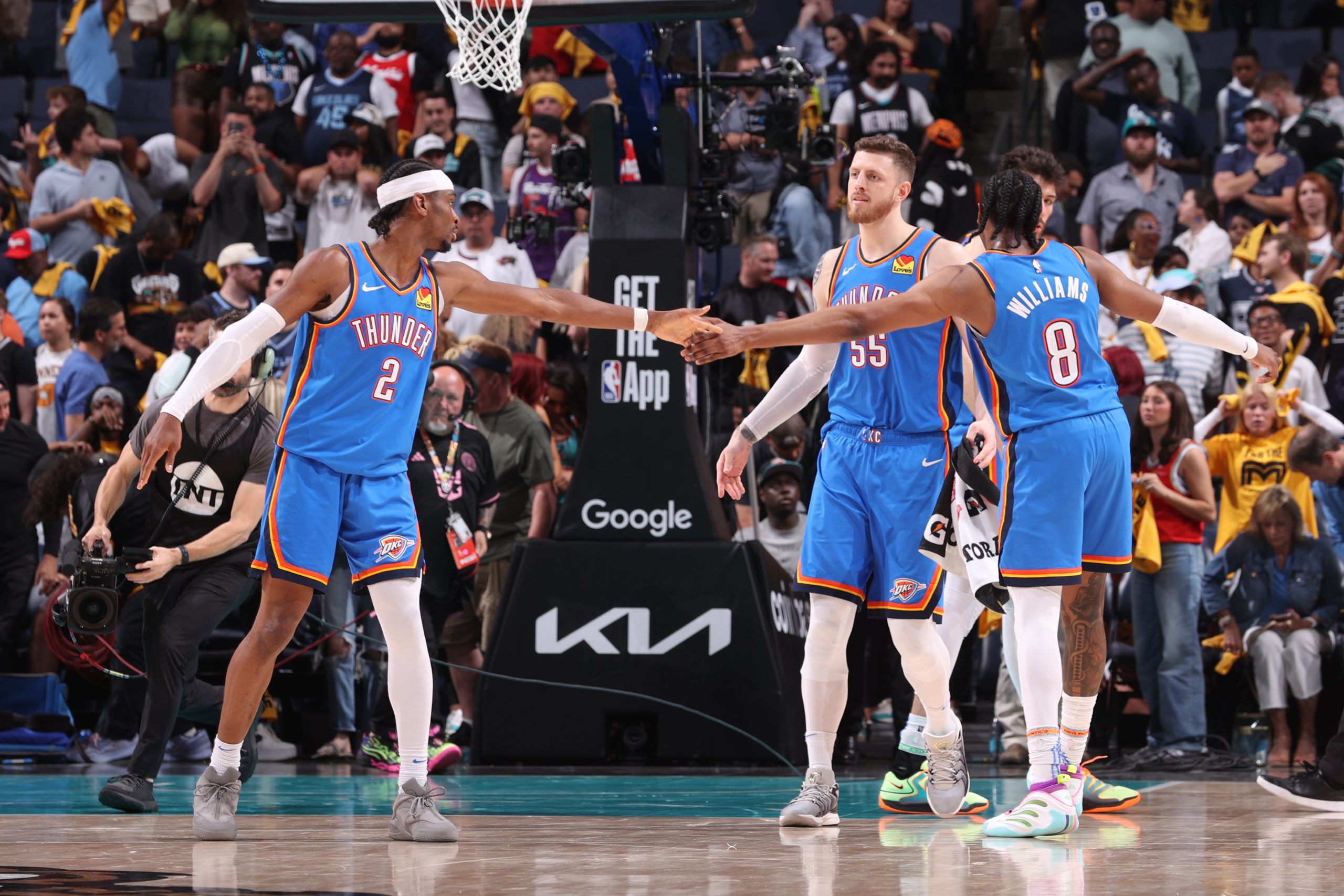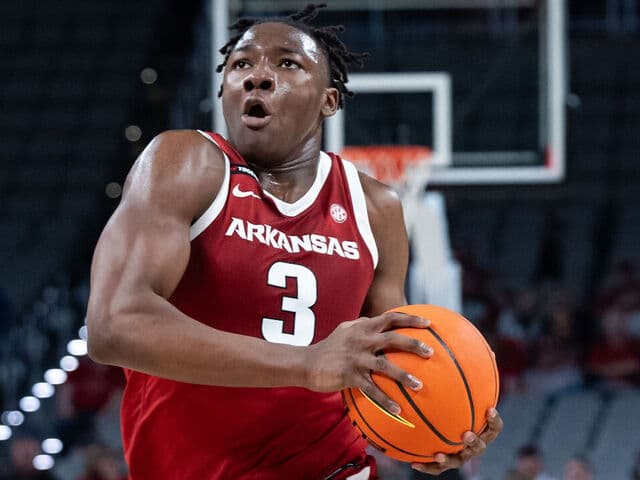Key Highlights:
- Murray’s true shooting percentage of 60.9 is a career-high
- Thirty-six percent of his shots are coming at the rim, his highest mark since 2017-18
- The Hawks are third in offensive rating, thanks largely to Murray’s play and head coach Quin Snyder’s system
Despite Trae Young‘s ghastly shooting — .326/.250/.875 slash line, 49 percent true shooting — to open 2023-24, the Atlanta Hawks are 3-2, riding a three-game winning streak and tout a pair of shiny wins over the Milwaukee Bucks and Minnesota Timberwolves.
They’ve done so through an egalitarian approach. Frugal contributions from role players such as De’Andre Hunter (18.0 points, 68.3% TS), Jalen Johnson (13.2 points, 66.8% TS), Bogdan Bogdanovic (12.0 points, 58% TS) and Saddiq Bey (11.6 points, 64.7% TS) are helping propel Atlanta to the league’s third-ranked offense. The star of the show, though, has been Dejounte Murray. The 27-year-old is playing the best basketball of his career and is actualizing the vision the Hawks held when they traded a haul for him 16 months ago.
What’s Different For Dejounte Murray?
Through five games, he’s averaging a career-high 21.8 points, 6.0 assists, 4.2 rebounds and 1.2 steals. Murray’s long stuffed the stat sheet. He’s a capable creator and high-level defensive playmaker who engulfs rebounds and has grown immensely as a distributor during his NBA tenure. The box score production isn’t the focal point, however. His approach is what’s powering his tremendous play and culminates in a career-high efficiency of 60.9 percent true shooting (4.6 points above league average, previous best was 3.3 points below league average in 2021-22).
For years, his midrange affinity and inability to draw many fouls has hampered his scoring efficiency. To an extent, it’s completely understandable. He’s been tasked with pretty sizable creation burdens, isn’t a super explosive slasher and is a vastly improved, albeit still shaky, outside shooter. The hope was that playing alongside Young in a well-spaced, talented environment would alleviate some of those efficiency woes. Granted, well-spaced didn’t always apply to last year’s Atlanta squad.
While that didn’t all culminate in 2022-23, it is this season. Murray and the Hawks are embarking upon their first full campaign with head coach Quin Synder, who took over in late February last season and is heralded as a sagacious offensive mind. Murray’s 25.5 percent usage rate is akin to last year’s 26.3 percent, but everything comes a little easier for him these days.
His rate of assisted makes is up to 52 percent (31 percent last season), which marks his highest number since 57 percent as a rookie in 2016-17. He plays in the open floor more. He’s not running as many stagnant high ball-screens that end in satisfactory, yet suboptimal, midrange pull-ups.. A full offseason for Snyder to instill his principles is on display.
Dating back to last spring, one of the biggest stylistic changes between Synder and his predecessor, Nate McMillan, is Atlanta’s tempo. According to Cleaning the Glass, the Hawks ranked 15th in transition frequency (15 percent) under McMillan. This season, led by Snyder, they’re first at 20.6 percent. They’ve also vaulted from 10th to first in time of possession after a defensive rebound, per inpredictable. They’re pushing the ball considerably more, especially Murray, whose transition rate has spiked from 15.2 percent to 25.5 percent, per Synergy.
The upshot of this for him is he’s both garnering newfound chances to drive all the way to the rim and is making a concerted effort to take advantage of any chances. Thirty-six percent of his field goals are coming at the rim (86th percentile among combo guards) — a jarring uptick from 20 percent last season (26th percentile). He’s converting 71 percent of them, applying his lanky, 6-foot-5 frame to score through or around traffic off the bounce.
How Is Head Coach Quin Snyder Helping Murray?
The other crucial aspect is how Snyder’s revitalized Atlanta’s spacing. Neither Clint Capela nor Onyeka Okongwu are reliable long-range threats (although, Okongwu is slowly trying to emerge as one). They’re rim-running centers who would conceivably cram home a dunk attempt for every shot if plausible. That archetype can bog down horizontal spacing because most coaches would elect to slot them around the hoop, given that’s why they’re best suited as scorers.
Snyder veers away from such conventionality. He knows Young and Murray are good enough to gift them looks when the moment arises in pick-and-rolls; they don’t need to lurk there and potentially curtail drives elsewhere. Instead, Capela and Okongwu are predominantly stationed above the break to draw out rim protectors and open the paint for drives from the likes of Murray, Young and Bey.
Defenders may not respect Capela or Okongwu’s jumpers. But they certainly respect the possibility of a pick-and-roll involving Young, Murray or Bogdanovic, so they cannot ignore their assignments when they may be imminently called into action. Synder’s tactic is benefitting everyone, Murray included. After placing 19th and 20th in rim frequency the past two seasons, the Hawks are fourth this season.
Not only is Murray shimmying to the rim as a creator, he’s maximizing quick-hitting opportunities and steering fewer possessions himself for long stretches. It’s exactly what the Hawks wanted when he arrived: blending his on- and off-ball prowess to buoy his efficiency and invigorate the team’s collective offense. Both on the fast break and in the half-court, he’s biding his time and letting someone else tilt the defense before torpedoing to the basket for quality shots.
Part of Murray’s fast start is a 12-of-19 clip (62 percent) from midrange. That won’t last, and that’s OK. This level of scoring efficiency is completely unprecedented in his career. Expecting it all season is probably wishful thinking. But between his own adjustments and those from Snyder, there are more than enough signals through five games to indicate he’s in line for a tremendous year.





